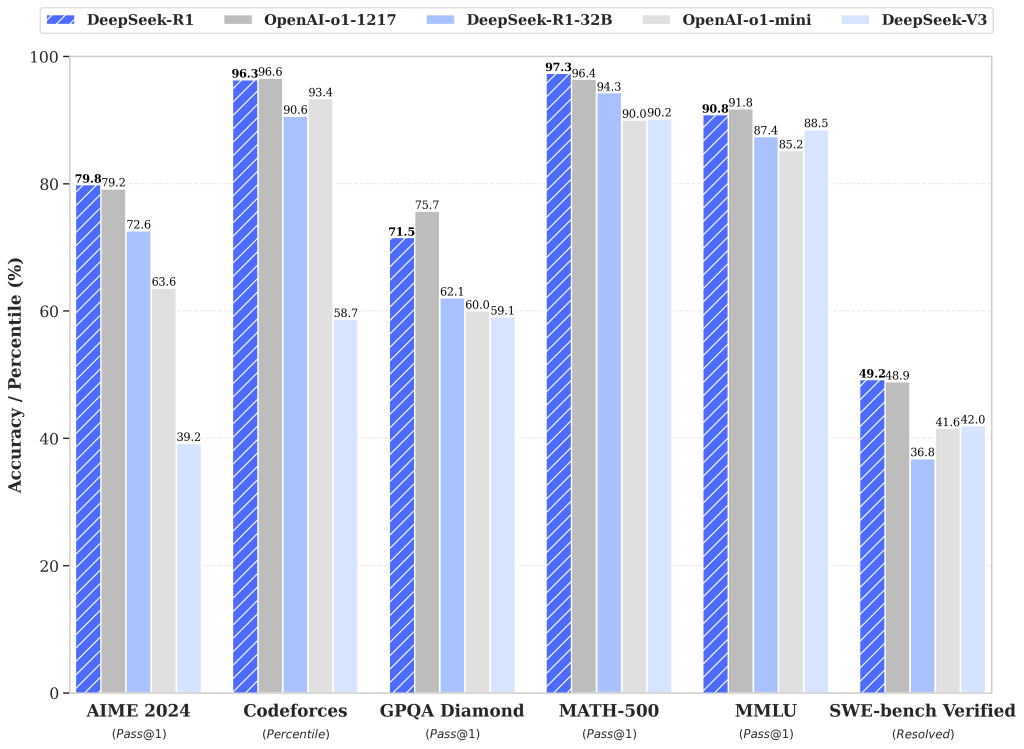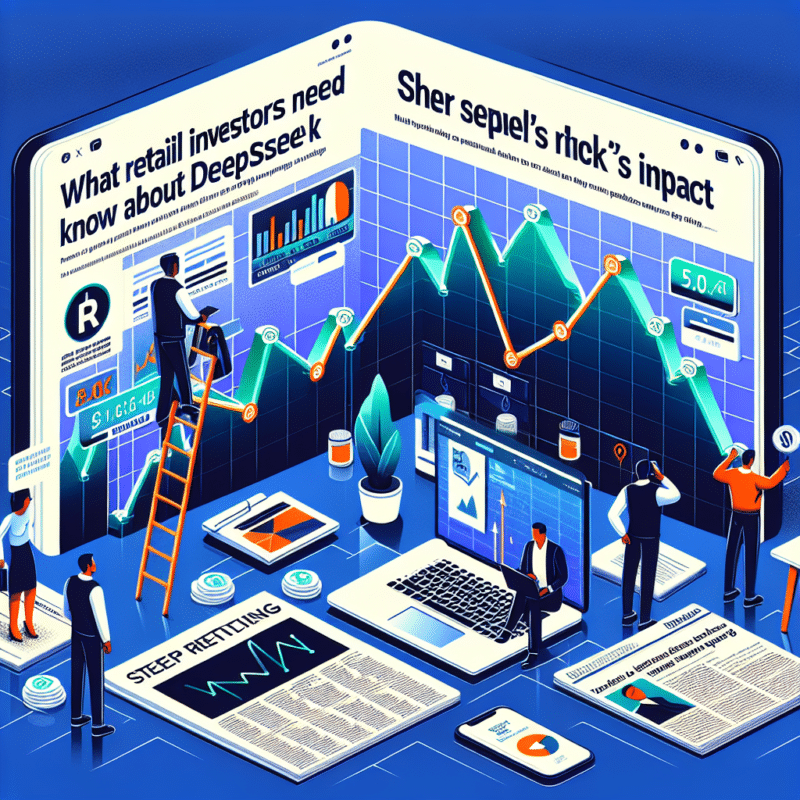[adrotate group="2"]
DeepSeek: High Performance and Efficiency Combined
Since its launch on November 29, 2023, DeepSeek, a large language model (LLM), gained attention by January 20 with a notable performance comparison chart across various domains such as coding (Codeforces), software engineering and debugging (SWE-bench), mathematics (AIME), and general reasoning (GPQA/MMLU).

DeepSeek is fully open-source and has been released under the MIT license. This could pose a challenge to Western efforts focused on “AI safety,” as DeepSeek allows individuals to modify an AI model that may not be as heavily regulated as mainstream alternatives from companies like Microsoft, Google, Meta, and OpenAI.
For instance, Alphabet’s Gemini AI faced criticism for its narrative control, notably in text-to-image generation, where it replaced historical figures of European descent with those of African descent, which led to criticism from figures such as Elon Musk.
In addition to potentially relaxing AI regulations, DeepSeek is highly cost-efficient. By employing 8-bit precision instead of 32-bit floating points, it significantly reduces memory use while also implementing key-value joint compression techniques.
Unlike ChatGPT’s single-token predictive model, DeepSeek features advanced multi-token prediction training that enhances its capability to handle long-range dependencies. This means that the 671B parameter model, DeepSeek-V3, not only comprehends context more effectively for superior outcomes but also learns efficiently from the same datasets.
As a result, DeepSeek is regarded as one of the most affordable AI models available, according to data from Artificial Analysis.

Notably, DeepSeek has been trained using AMD’s Instinct AI chips, further supporting Nvidia’s competitors.
Overall, this startup based in Hangzhou, backed by quantitative hedge fund High-Flyer, seems to have achieved a significant milestone in AI, akin to what Chinese manufacturers like BYD accomplished in scaling electric vehicle production.
Assessing the Stakes in AI Deployment
Essentially, all governance structures derive legitimacy and stability from controlling narratives. For instance, during the pandemic, dissenting voices were actively suppressed through unprecedented and coordinated measures, in collaboration with private companies, highlighted by Mark Zuckerberg’s apology and the revelations from the Twitter Files.
Narrative control is vital for executing various agendas. For example, if an effort were made to undermine a pipeline affecting economic interests between Russia and Europe, such an act would necessitate a layer of obfuscation.
A greater degree of uncertainty and fragmentation in narratives decreases the likelihood of counter-narratives gaining traction, facilitating the fulfillment of established agendas. Hence, the deployment of AI holds crucial importance for governments—it represents the ultimate form of content moderation:
- Proactive content monitoring across all social media platforms.
- Identifying and mitigating trends.
- Guiding users toward favored narratives regarded as legitimate.
- Automatically removing or shadowbanning opposing content.
- Modifying historical records or search outcomes.
AI is set to transform government responses, making them quicker and more precise, which explains Palantir’s increasing number of defense contracts. As illustrated in previous discussions regarding Tony Blair’s Institute for Global Change (TBI), AI is evolving from merely controlling newspapers to dominating digital spaces.
“AI systems can enhance government strategy in addressing complex decisions on critical issues, providing more accurate, detailed, and timely information and insights.”
TBI’s Governing in the Age of AI: A New Model to Transform the State
The broader impact of AI on human labor remains uncertain given unresolved issues, such as AI’s tendency for confabulation, as highlighted by Apple’s recent AI-related news failure.
DeepSeek’s Impact on US-Centric Big Tech
For decades, a bipartisan consensus has prevailed to establish China as a global manufacturing and technology powerhouse, a trajectory that began in the 1970s with President Nixon, leading to China outpacing the US in manufacturing by 2010.
This dynamic provides China with significant counter-leverage. For instance, the Biden administration’s restrictions on advanced chip exports elicited a response from China, which banned the export of key minerals like antimony, gallium, and germanium essential for high-end electronics.
Similarly, as the US and EU imposed tariffs in response to China’s electric vehicle scaling, this provided a crucial advantage for Tesla (NASDAQ:). In terms of energy provision for China’s growing AI data centers, it is noteworthy that China leads in nuclear power plant construction, boasting the world’s first 4th generation nuclear reactor.
Therefore, as the battle over global AI and GPU chip restrictions escalates, China has the necessary human and infrastructural capital at its disposal, including the critical open RISC-V instruction set architecture (ISA) that could aid breakthroughs in China’s chip manufacturing capabilities, potentially rivaling Taiwan’s TSMC.
Consequently, it remains unclear what further actions the US government can take that haven’t already been implemented against China. In the meantime, DeepSeek is shifting the hegemonic balance in the global AI landscape.
“DeepSeek is set to challenge Silicon Valley’s dominance, transforming the international technology landscape and influencing the trajectory of the AI arms race,”
Nigel Green, CEO of deVere Group, an international financial consulting firm
Even if US-developed AI models achieve efficiency levels comparable to DeepSeek, it is likely that the demand for AI chips and infrastructure will continue on its current trajectory. This is primarily due to the anticipated explosion in compute demand for text-to-video generation.
Ultimately, in the realm of public-private partnerships (PPPs), the US government possesses tools to curb unwelcome technological advancements. However, unlike tariffs aimed at electric vehicles, it will be significantly more challenging to isolate superior open-source code.
***
Neither the author, Tim Fries, nor this website, The Tokenist, is providing financial advice. Please refer to our website policy before making any financial decisions.
[adrotate group="2"]





